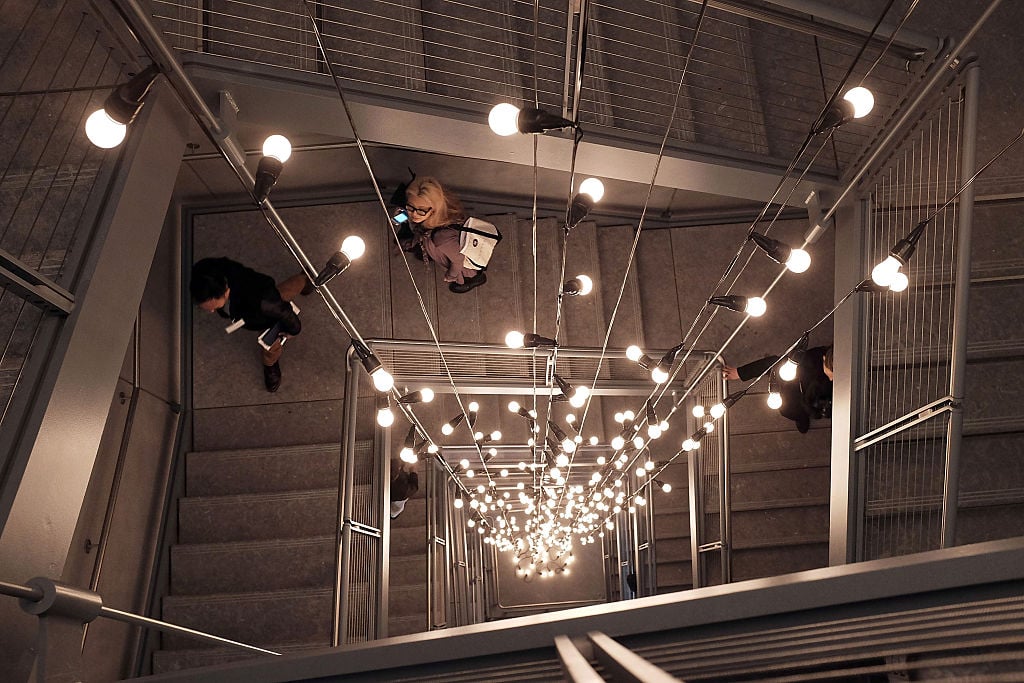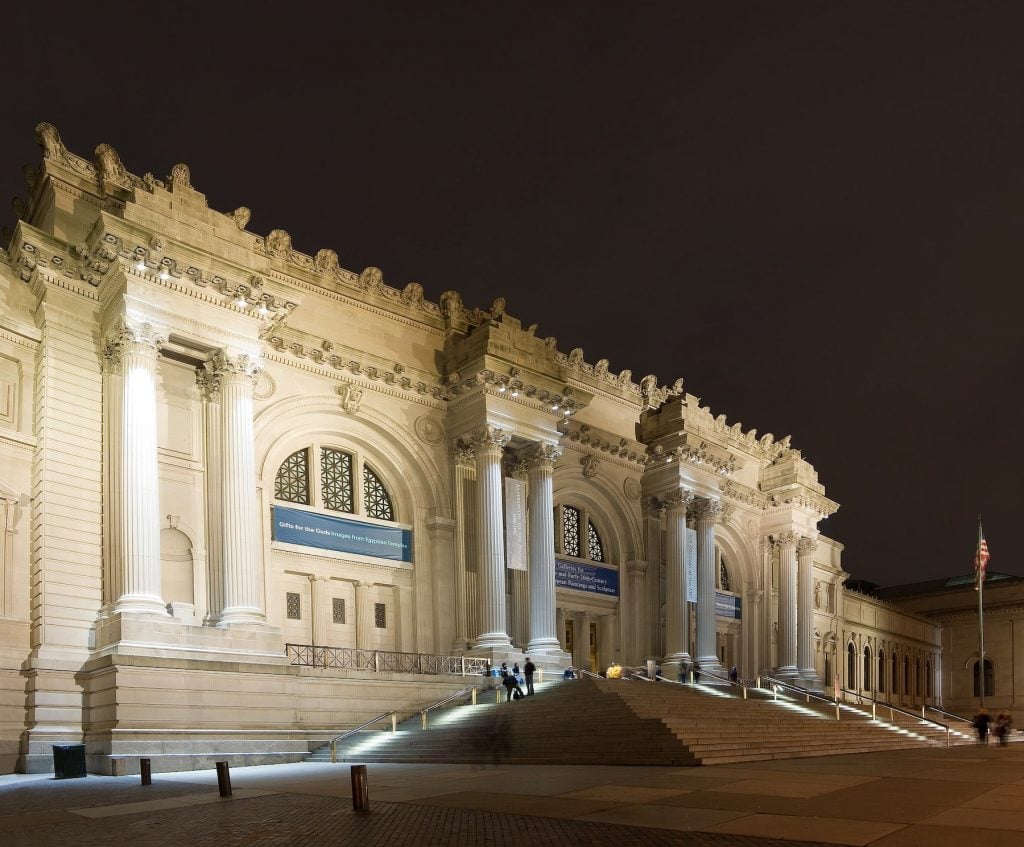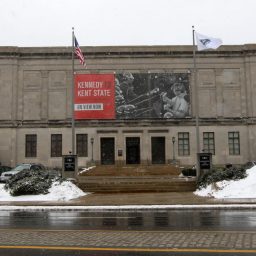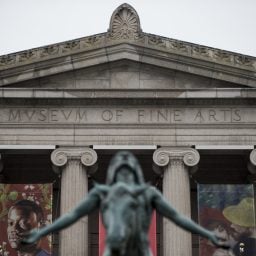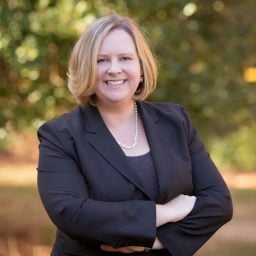Instagram statements and open letters flooded the internet in June 2020, as brands and institutions rushed to respond to the worldwide protests against police brutality spurred by the murder of George Floyd.
Museums across the U.S. publicly stated their commitments to work towards dismantling systemic racism, frequently citing intentions to listen to communities, improve hiring practices, support BIPOC staff, re-evaluate workplace culture, offer anti-racism training, and acquire and exhibit work from a more diverse range of artists.
Two years on from these calls for action, are museums feeling the same urgency? Or were these promises just platitudes?
We followed up with several museums on their grand pronouncements from 2020 to see what they’ve actually followed through on, how their plans have changed, and what still remains to be done.
Newfields
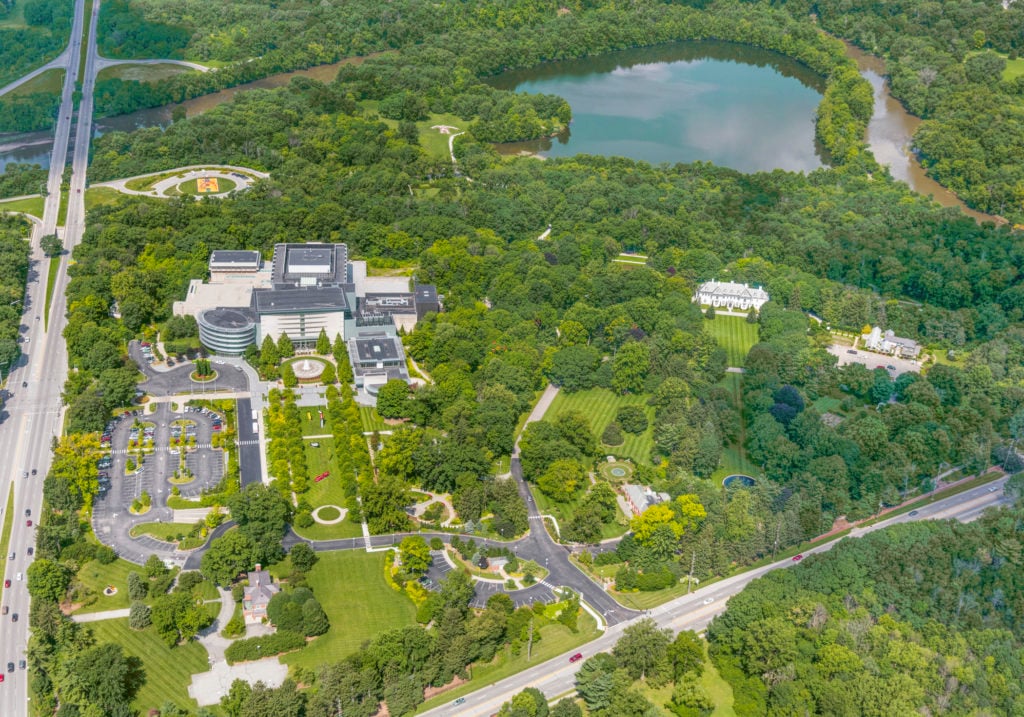
The Newfields campus. Image courtesy of Newfields.
Formerly the Indianapolis Museum of Art, this 152-acre cultural campus instituted a DEAI Action Plan in March 2021, shortly after the resignation of director Charles L. Venable, who came under fire for a job posting that called for candidates that would “attract a broader and more diverse audience while maintaining the museum’s traditional core, white art audience.”
The DEAI Action Plan lists “a series of immediate priorities to begin rebuilding trust with our staff, volunteers, docents, and community, including local artists.” Further information about Newfields’ commitments can be found on its website.
Commitments:
- Organization-wide DEIA training
- Increased diversity of senior leadership and Board of Trustees
- Hire a leadership-level diversity executive
- Outside review of leadership, culture, and policies
- Launch a Community Advisory Committee
- $20 million endowment to enhance representation in exhibitions and programming
- Expand access, partnerships, and free memberships for local community
- Expand free ticketing
- Better communication and engagement with audiences
Where things stand:
In May 2022, Newfields appointed Colette Pierce Burnette as the organization’s first Black woman leader. It is still in the process of recruiting a new diversity executive, but has created the new position of vice president of human resources and chief people pfficer, appointing Ernest Gause in February.
In March, Newfields reported that 100 percent of its board of trustees, board of governors, and senior leadership had undergone DEAI training, while other staff completed over 3,500 hours between them.
So far, Newfields has committed just over $1.8 million to acquiring works by traditionally marginalized artists. It has thus far boughe works by artists such as contemporary artist Vaughn Spann and the one-time enslaved Old Master painter Juan de Pareja.
The Community Advisory Committee, which reviews public programming and advises on community engagement practices, is chaired by Sean L. Huddleston, president of Martin University. It helped develop the Neighborhood Membership, launched in late 2021 to offer free access to local residents. Free admission is also offered on MLK Jr. Day and Juneteenth.
New Orleans Museum of Art

New Orleans Museum of Art. Photo courtesy of the New Orleans Museum of Art.
Taking the name #DismantleNOMA, an online movement of activists sought to call out an “anti-Black culture” at the New Orleans Museum of Art (NOMA). In an open letter dated June 24, 2020, the group cited the museum’s predominantly white staff with no Black members serving on its executive committee. Noting the newly restored Greenwood plantation parlor suite that had been permanently installed at the museum in 2019, the letter claimed that “there also exists a plantation-like culture behind its facade.” NOMA addressed the criticism in a statement setting out an Agenda for Change.
Commitments:
- Increase the representation of BIPOC on board membership to 25 percent over three years
- Institute facilitated staff and community conversations
- Develop an internal task force focused on increasing a culture of inclusivity
- Improve hiring practices to expand diversity of staff
- Name an independent ombudsperson for employee relations
- Issue regular progress reports
- Commit art acquisition funds to acquiring works by BIPOC artists, with a particular focus on those from New Orleans
- Close the Greenwood Parlor
Where things stand:
In late 2020, NOMA reported that seven new members, four of them Black, had been elected to the board of trustees to improve the diversity of expertise. In 2021, the museum hired Natrang Stanley as its new human resources manager and began revising its hiring strategy in an attempt to eliminate unconscious bias. The museum has hired a consultant to help establish a staff equity committee, which is set to meet this September.
NOMA’s staff have participated in workshops led by the museum’s contracted DEI partner, with special training for staff who are in supervisory positions and other group sessions for board members. At an all-staff meeting in April 2021, participants reflected on the Agenda for Change. Two three-day anti-racism training sessions were held in November and December 2021.
In the second half of 2020, NOMA purchased 22 works by BIPOC artists, the majority of whom are local to New Orleans. Those and other acquisitions and loans have been made public in the exhibitions “Katherine Choy: Radical Potter in 1950s New Orleans”; “Picture Man: Portraits by Polo Silk”; and “Called to the Camera: Black American Studio Photographers” (forthcoming).
San Francisco Museum of Modern Art
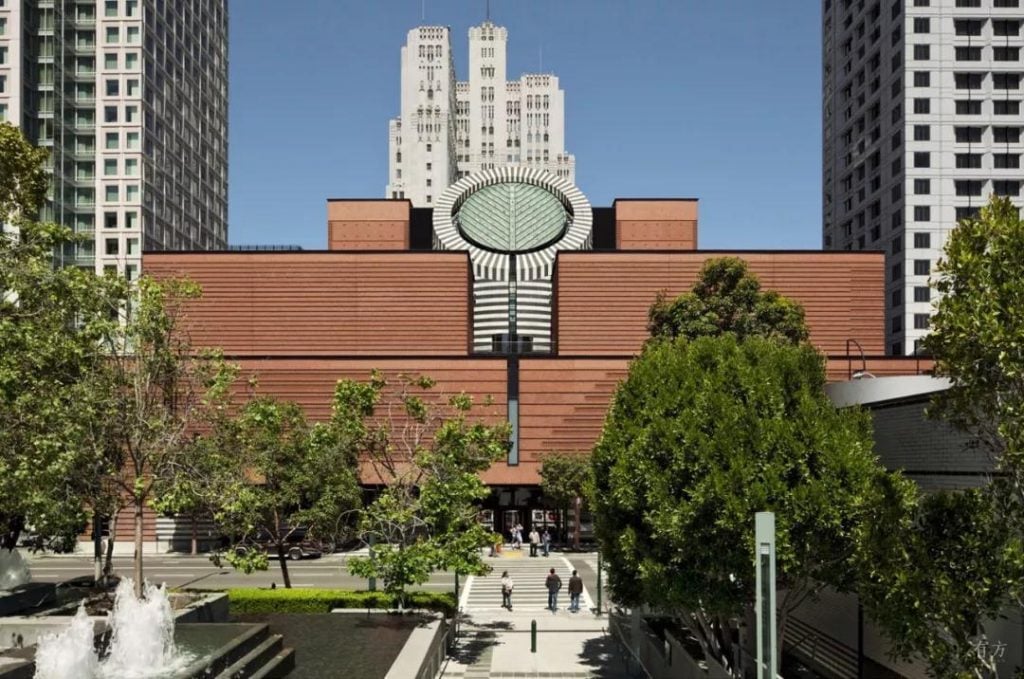
The San Francisco Museum of Modern Art. Photo by Henrik Kam, courtesy of SFMOMA.
In July 2020, senior curator of painting and sculpture at the San Francisco Museum of Modern Art (SFMOMA) Gary Garrels resigned in response to a petition calling for his removal after a former employee complained that he had insisted the SFMOMA should continue collecting artworks by white men so as to avoid reverse discrimination. In response, SFMOMA issued a list of institutional DEI commitments, offering regular updates. At the beginning of 2022, the museum announced that these had mostly been completed and it would transition to a new DEI Strategic Plan. In the same month, the artists artists Marcela Pardo Ariza and Juan Carlos Rodriguez Rivera were commissioned to create posters placed at the museum entrance, two of which read “we need a museum that destroys white supremacy” and “we want Black, Indigenous and POC in leadership positions.”
Commitments:
- Build awareness of DEI issues
- Enhance diversity, equity, and inclusion
- Foster community and belonging
- Improve organizational accountability and continuity in systems and structures
Where things stand:
In 2020, staff completed five training sessions facilitated by Darlene Hall on power and privilege; the psychology of privilege; conflict and communication; sociocultural privilege dynamics in communication; and unconscious bias.
In July 2020, staff and trustees discussed key DEI priorities in open forums, with feedback integrated into the museum’s Diversity Action Framework. These recommendations fed into the DEI Strategic Plan. Research was also conducted into the DEI practices of peer institutions and data was collected during facilitated discussions with staff and from two staff surveys.
A DEI core team of trustees and staff have been appointed to oversee DEI activities and 10 trustees gathered to focus on board-specific actions. Special Project Teams were created to identify priorities and develop Action Plans for the DEI Strategic Plan across five operational pillars: Internal Operations, Exhibitions and Art Collections, Training and Professional Development, Community Engagement and Organizational Accountability and Continuity.
“It’s important to note that rather than a selection of one-off initiatives or events, SFMOMA aims to have DEAI permeate all that we do, on both individual and institutional levels,” a spokesperson for the museum told Artnet News. “It is not a short-term endeavor limited to a static list of deliverables but rather an ongoing journey that is continuously evolving.”
The Metropolitan Museum of Art
The museum was criticized in June 2020 by artist Glenn Ligon for using a reproduction of his work without permission in a letter declaring the museum’s support of Black Lives Matter. Museum director Max Hollein later apologized personally to the artist. In July 2020, The Met published its 13 commitments on anti-racism.
Commitments:
- Assess the museum’s past and present practices
- Require annual anti-racism training for all staff, volunteers, and trustees
- Hire a chief diversity officer
- Commit to a program of hiring BIPOC candidates to department head and senior leadership roles
- Invest in recruiting, hiring, retaining and advancing BIPOC candidates and staff
- Provide ongoing resources and support for community building, staff mentoring and employee resource groups
- Further strengthen a program of exhibitions, events, and publications that addresses complex and unfamiliar narratives, cross-cultural perspectives and fosters a more diverse canon
- Diversify the collections and its narratives
- Increase the representation of BIPOC individuals on the board of trustees
- Commit to an annual diversity audit to be conducted by the CDO
Where things stand:
The Met appointed Lavita McMath as Chief Diversity Officer in November 2020 and now reports greater diversity in leadership positions, including head of the design department, the chair of the education department, and several curatorial roles in the department of Modern and contemporary Art, the American Wing, and the Michael C. Rockefeller Wing. All interns are now paid. All staff have undergone anti-racism training.
A new endowment has been created for the acquisition of work by BIPOC artists, alongside other resources. Recent works to enter the collection include those by Wangechi Mutu, Kent Monkman, Charles Alston, Elias Not Afraid, Gail Tremblay, George Morrison, Archibald Motley, Jr., and the archive of photographer James Van Der Zee.
In November 2021, the museum opened the long-term installation “Before Yesterday We Could Fly: An Afrofuturist Period Room” featuring works by contemporary artists of color. Forthcoming shows include Hew Locke’s facade commission, a major display of Maya art, and an examination of vessels made by enslaved potters in South Carolina.
Museum of Contemporary Art, Detroit
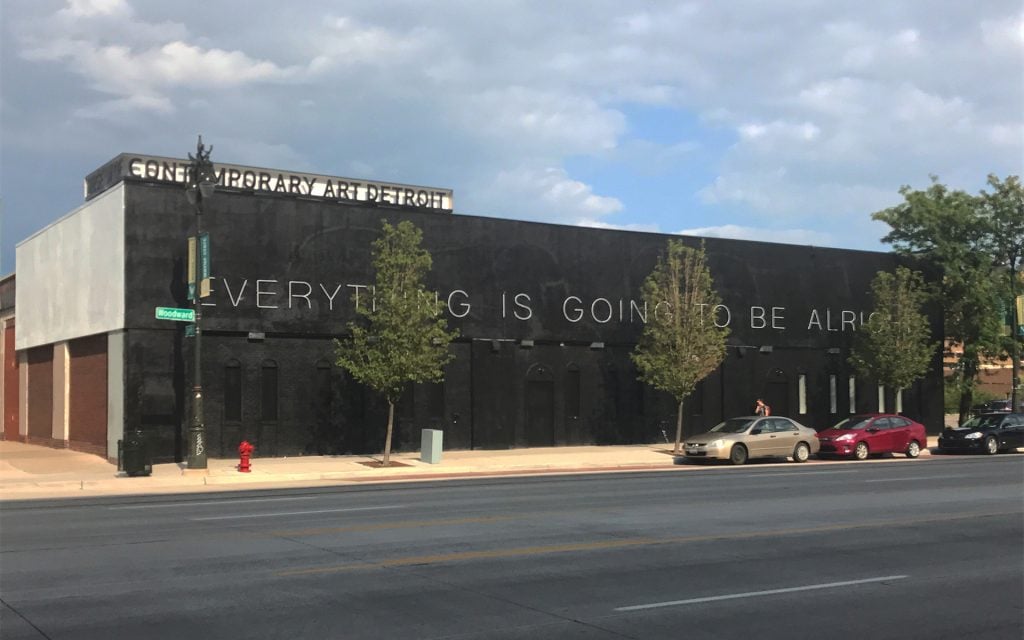
Exterior view of Museum of Contemporary Art Detroit, 2017. Photo courtesy of MOCAD.
In June 2020, a letter addressed to the board of the Museum of Contemporary Art, Detroit (MOCAD) was cosigned by 70 former staff members. It called for the removal of chief curator and executive director Elysia Borowy. Following the departure of three Black curators from the museum over the previous eight months, the writer’s of the letter recalled witnessing Borowy commit “various racist micro-aggressions, mis-gendering, violent verbal outbursts, and the tokenization of marginalized artists, teen council members, and staff.” Borowy- was fired on July 29 and the museum posted a statement on Twitter. (“After an investigation one of which I was not interviewed for, I was fired for no cause, after which MOCAD settled,” Elysia Borowy told Artnet News.)
Commitments:
- Work with employees to create a system of accountability between the board and staff
- Create ways by which the employee voice and community voice can be heard and establish a confidential email box for complains
- Work to increase BIPOC representation on board committees and the board itself so that one-third of the board will reflect economically and racially diverse communities
- Foreground the voices of former staff members who had left (and have been re-hired) in reshaping the institution
- Work with Teen Council to create more opportunities for meaningful engagement
- Create an improved parental leave arrangement for all staff
Where things stand:
In April, MOCAD parted ways with its new executive director Cara Courage from the Tate Exchange program in London, who had been hired after a two-year search. Instead, the museum is promoting a shared leadership model which will bring on a new artistic director and see Marie Madison-Patton, who was promoted to the role of deputy director earlier this year, become chief operations officer. The board has welcomed several new members and elected Charles Boyd and Lynn Arsht Gandhi to co-chair positions.
Madison-Patton said in a statement to Artnet News: “MOCAD has initiated discussions with Michigan Roundtable regarding their assistance in conducting DEI training for the museum. They are very familiar with our organization and truly understand the community we serve. After a series of conversations regarding our work environment, Michigan Roundtable has agreed to develop a curriculum specific to MOCAD.” The sessions will begin this fall after a new artistic director for the museum has been hired, with sessions for the board of directors to follow.
MOCAD facilitates the Waawiiyaataanong Arts Council, a group of artists, activists, cultural workers and community organizers that centers Indigenous and Black voices. It has created a land acknowledgement for MOCAD that is displayed online, in the program guide and recited at every public programming event.
Solomon R. Guggenheim Museum

Guests at the Guggenheim “Art After Dark”. Courtesy of the Solomon R. Guggenheim, New York.
The Guggenheim’s leadership received a letter from 22 members of its curatorial team in June 2020 demanding action to address an “inequitable work environment that enables racism, white supremacy, and other discriminatory practices.” They also asked leaders to apologize to Chaédria LaBouvier, who in 2019 became the first Black curator to organize a solo show at the Guggenheim. “Working at the Guggenheim w/ Nancy Spector & the leadership was the most racist professional experience of my life,” LaBouvier wrote on Twitter. The museum published a 24-month DEAI Action Plan in August 2020. (Spector was cleared of wrongdoing and charges of racism by an independent investigation.)
Commitments:
- Launch connection groups to allow staff of shared backgrounds and interests to come together, discuss relevant topics, and share resources
- Develop anti-racism and culture statement for the museum
- Expand paid internship program and recruit first-generation college students, students receiving financial aid, and BIPOC students
- Hire cabinet-level position to advance the work of the DEAI Action Plan
- Train hiring managers and review hiring procedures to remove biases
- Promote job opportunities and internships with historically Black colleges and universities
- Develop new organizational structure and procedures to review grievances and complaints
- Set goals for diversifying board and reassess requirements for joining the board
- Establish a special committee to oversee an independent investigation of LaBouvier’s accusations
- Examine exhibition history over the past 25 years and acquisitions history over the past 10 years through the lens of racial equity and diversity
- Acquire work by Black, Latinx, and Indigenous artists, especially including those of marginalized ethnicities, gender identities, and sexualities
- Identify a list of artists, artworks, and movements to be prioritized for acquisition
- Dedicate a percentage of the library and archives acquisition budget to publications featuring BIPOC artists, curators, and scholars
- Increase BIPOC artists, scholars, and other presenters within public programs
- Schedule ongoing training for frontline staff on implicit bias, cultural competence, accessibility, museum de-escalation scenarios, and trauma-informed practice
Where things stand:
In September 2021, the Guggenheim appointed Ty Woodfolk as chief culture and inclusion officer. In a statement to Artnet News, he said: “While milestones have been achieved in the critical areas of staffing and culture, board diversification and governance, collections, exhibitions, research and publications, and audience engagement, we recognize that this is continuous and ongoing work, and it inspired us to work harder on this journey together across every level of our organization.”
The museum’s 24-month DEAI action plan closes this month. The Guggenheim is currently developing a new iteration of the DEAI plan.
The Getty Museum
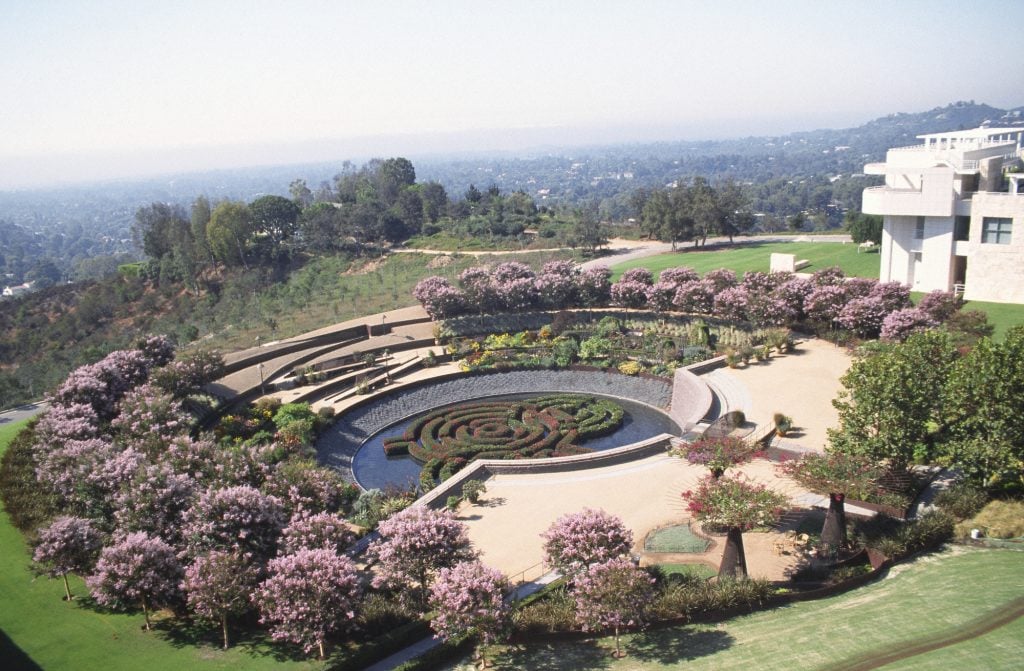
Courtesy of the Getty Center.
In early June 2020, Getty president Jim Cuno issued an apology for the museum’s earlier message in support of “equity and fairness,” which had been criticized as being too vague and failing to mention either George Floyd or Black Lives Matter. An open letter to the Getty’s board also pointed out a lack of people of color in senior positions and little support and funding for the DEI council. Getty published its DEAI plan in January 2021.
Commitments:
- Develop Getty’s workforce to reflect the diversity of Southern California and the nation
- Confront and eliminate racism and discrimination in the workplace
- Improve communication within the Getty community to help contribute to a culture of trust
- Enhance diversity and accessibility of collections, interpretations, exhibitions, digital content, education, and public programs
- Deepen engagement between all areas of Getty and BIPOC and other diverse communities, locally and nationally
Where things stand:
In addition to ongoing mandatory training for all staff on managing unconscious bias, Getty has added mandatory anti-racism learning sessions as well as training for all hiring managers. The museum is in the process of surveying its staff on their experiences of the recruitment process, with the results and recommendations forthcoming. Employee resource groups are also in the process of being launched.
More diverse programming includes “Reinventing the Américas: Construct, Erase, Repeat,” Working Together: the Photographers of the Kamoinge Workshop, and a newly commissioned mural by Judy Baca as well as the African American Art History Initiative, research program led by curator LeRonn Brooks. Acquisitions include the inaugural portfolio of Black Women of Print and the Jet and Ebony photo archive chronicling 20th-century Black life.
The DEAI Council hosted a moderated conversation with Ibram X. Kendi on anti-racism and conducted a Getty-wide cultural climate survey and listening sessions, both with bilingual options. The museum has hired a Spanish editor to oversee bilingual communications and has increased its offering of bilingual exhibitions, with hopes to eventually commit to fully bilingual exhibitions.
The safe and welcoming environments committee commissioned a study to determine how BIPOC visitors experience both Getty sites, and presented the results and recommendations. The museum reports that some changes are now in the process of being implemented.
Philadelphia Art Museum

Exterior of the Philadelphia Museum of Art. Photo by Ben Davis.
In June 2020, leaders at the Philadelphia Museum were called out after they described Black Lives Matter protests in the city as “compromised by the looting and destruction of property” and stated “every individual life matters” in an email to staff. Responding in a letter, five Black employees, including some in managerial positions, said they had been “taken aback by the lack of compassion and empathy for the Black staff and contractors in this museum.” They also noted that the mention of “every individual life” diminished the specific threat to Black lives of police brutality. The museum has since released a statement in support of Black Lives Matter.
Commitments:
- Authentically engage and collaborate with our communities in the development of exhibitions, education programs and other initiatives.
- Cultivate a culture of belonging and inclusion whereby staff, management, volunteers and trustees better reflect the diversity of Philadelphia and the global communities we serve.
- Expand our collection to include more works by underrepresented artists, including but not limited to artists of color, women and those who identify as LGBTQIA+.
- Increase the number of diverse companies with which we collaborate, including minority-, women-, LGBTQ-, and disabled-owned businesses
Where things stand:
In June 2021, Alphonso Atkins was appointed as the museum’s deputy director for DEAI. He has since been responsible for “developing and overseeing a comprehensive strategy for achieving the museum’s goals of becoming more inclusive and creating a more equitable workplace culture that better reflects the diversity of Philadelphia and the global communities that the museum serves.”
Museum of Contemporary Art, Los Angeles
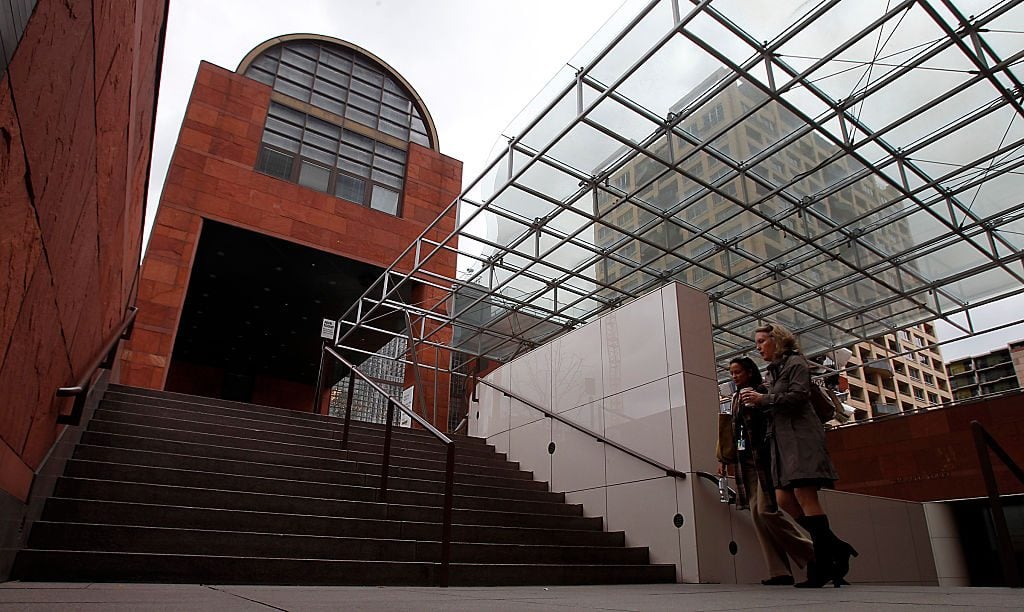
MOCA Los Angeles. (Photo by Luis Sinco/Los Angeles Times via Getty Images)
The Museum of Contemporary Art (MOCA) has recently updated its DEIA goals.
Commitments:
- Improve physical museum accessibility through strategic, short-term and long-term capital improvements.
- Continue to engage BIPOC-identifying candidates to join the team.
- Finalize and implement a new Agreement of Conduct and Culture, to create a more inclusive work environment.
- Implement an education roadmap including mental well-being in the workplace, non-binary and transgender education, disability etiquette and dismantling systemic racism.
- Implement a new employee-driven measurement tool to supplement ongoing listening sessions to assess levels of belonging and inclusion
- Grow accessibility initiatives to include cognitive and psychological accessibility
Where things stand:
Since June 2020, the museum has increased its BIPOC identifying team members to 61 percent of its workforce. Changes to hiring practices include posting all salary ranges. Non-binary identifying team members have doubled to 4 percent. Eighty-five percent of the senior leadership team are women and 43 percent identify as BIPOC. MOCA has also completed a position and compensation equity analysis and closed gaps.
The museum is in the closing stages of hiring a new chief people and culture officer, transforming a traditional HR role into a senior leader devoted to cultural evolution. It has created a board committee dedicated to DEI&A as well as a separate employee-led DEI&A Staff Advisory Committee.
Having established an acquisition goal of having at least 50 percent of art created by BIPOC, women and non-binary identifying artists, MOCA exceeded this goal to reach 70 percent. They have recently installed a work by artist Derek Fordjour and have forthcoming solo exhibitions of Los Angeles-based artists Judith Baca, Garrett Bradley, Tala Madani, and Henry Taylor.
The museum has started a new initiative to include Spanish translations of exhibition wall texts and bilingual web and social media posts.
“MOCA has been engaged in DEI&A work for a number of years. The social reckoning surrounding the protests of the murder of George Floyd intensified our existing efforts,” MOCA director Johanna Burton told Artnet News. “Much of our DEIA work in recent years has been focused on reevaluating internal structures, gathering and listening to feedback from our teams and communities, and responding to this information as thoughtfully and nimbly as possible.”
Whitney Museum of American Art
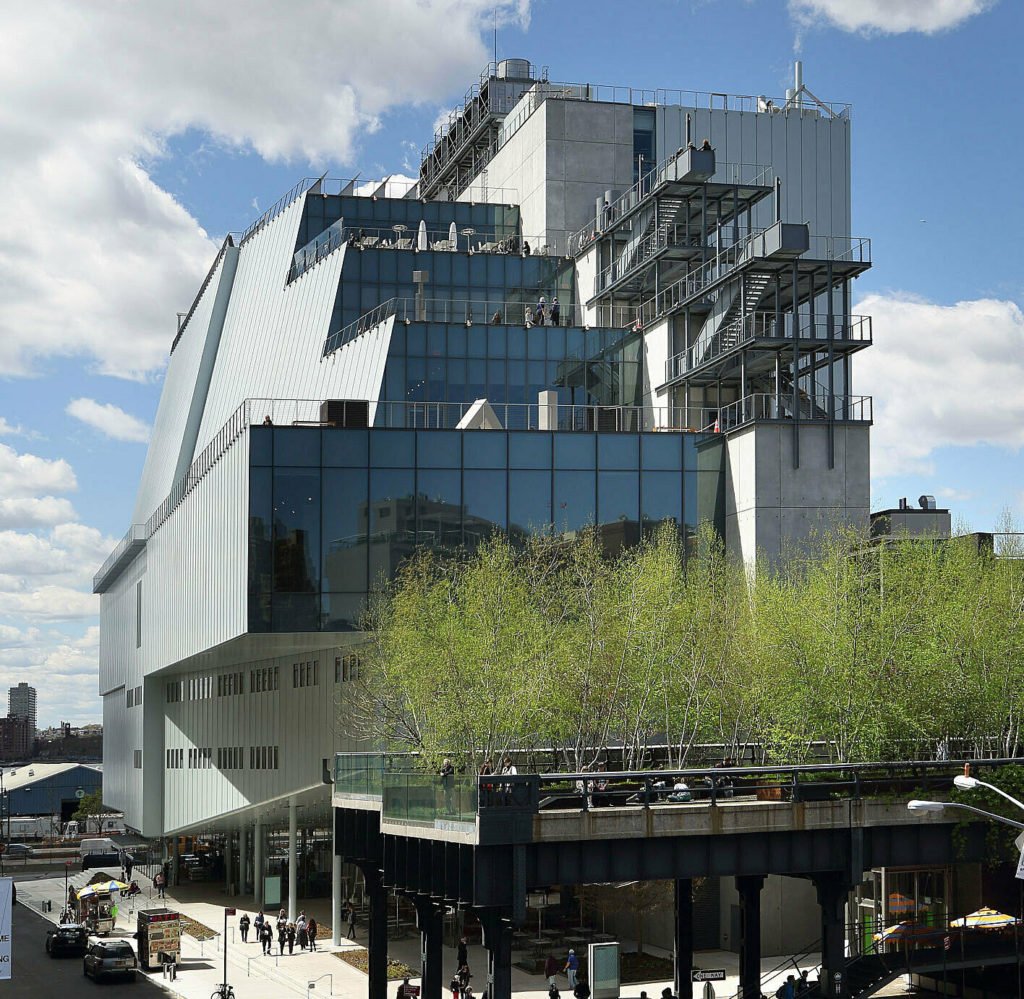
The Whitney Museum of American Art. Photo courtesy the museum.
The Whitney is no stranger to controversy, having made frequent headlines in recent years. At the 2017 Whitney Biennial, the inclusion of Dana Schutz’s Open Casket (2016), depicting the 14-year-old Emmett Till after he was lynched in 1955, sparked outrage. Several artists pulled out of the 2019 biennial in protest of the museum’s failure to remove the trustee Warren B. Kanders, owner of Safariland Group which distributes law enforcement and military supplies, including tear gas (he eventually stepped down). In August 2020, the museum cancelled a planned exhibition after some of the artists claimed they had not given permission for their works to be included.
Commitments:
The Whitney did not publish a list of commitments but followed an internal DEI guide. An open letter to the community by the museum’s director promised to “re-examine our exhibitions and programs to ensure they continue to address the art and experiences of people of color, especially Black communities” and “review our staff, our organizational structures, and our culture through a lens of racial equity and will commit to additional anti-racism and unconscious bias training.” Additionally, he said “our board of trustees will pursue the goals of adding greater diversity and reviewing its governance, both of which are already underway.”
Where things stand:
Several rounds of DEI training for all staff have been completed and future training is being planned. Staff were encouraged to give feedback. A new institution-wide commitment to building a bilingual visitor experience was reflected in the 2022 biennial Quiet As It’s Kept.
The Whitney has renewed its commitment to a diverse program, exemplified by the forthcoming exhibition “No Existe un Mundo Poshuracán: Puerto Rican Art in the Wake of Hurricane Maria,” set to open in November. This is the first major exhibition of Puerto Rican art at a U.S. museum in 50 years.
